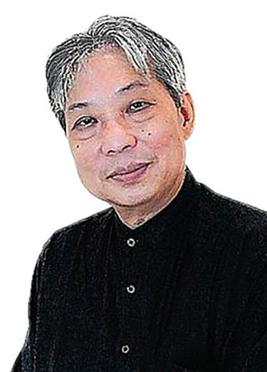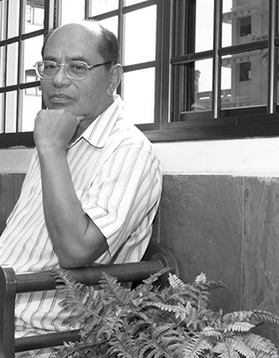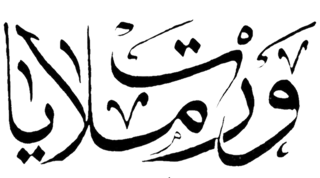
The Malayan Union was a union of the Malay states and the Straits Settlements of Penang and Malacca. It was the successor to British Malaya and was conceived to unify the Malay Peninsula under a single government to simplify administration. Following opposition by the ethnic Malays, the union was reorganised as the Federation of Malaya in 1948.

The Federation of Malaya was a federation of what previously had been British Malaya, comprising eleven states that existed from 1 February 1948 until 16 September 1963. The Federation became independent on 31 August 1957, and in 1963, Malaysia was formed when Malaya united with Singapore, North Borneo, and Sarawak.

Sir Frank Athelstane Swettenham was a British colonial administrator who became the first Resident general of the Federated Malay States, which brought the Malay states of Selangor, Perak, Negeri Sembilan and Pahang together under the administration of a Resident-General based in Kuala Lumpur. He served from 1 July 1896 to 4 November 1901. He was also an amateur painter, photographer and antique collector.

PAP–UMNO relations refers to the occasionally-turbulent relationship between the People's Action Party (PAP), the governing party of Singapore since 1959, and the United Malays National Organisation (UMNO), the leading party of the Barisan Nasional coalition which governed Malaysia from 1955 to 2018. The two parties' relationship has impacted Malaysia–Singapore relations given the countries' geographical proximity and close historical ties.

Yusof bin Ishak was a Singaporean politician and journalist who served as the first president of Singapore between 1965 and 1970.
Ketuanan Melayu is a political concept that emphasises Malay preeminence in present-day Malaysia. The Malays of Malaysia have claimed a special position and special rights owing to their longer history in the area and the fact that the present Malaysian state itself evolved from a Malay polity. The oldest political institution in Malaysia is the system of Malay rulers of the nine Malay states. The British colonial authorities transformed the system and turned it first into a system of indirect rule, then in 1948, using this culturally based institution, they incorporated the Malay monarchy into the blueprints for the independent Federation of Malaya.

Malay nationalism refers to the nationalism that focused overwhelmingly on the Malay anticolonial struggle, motivated by the nationalist ideal of creating a Bangsa Melayu. Its central objectives were the advancement and protection of Malayness: religion (Islam), language (Malay), and royalty. Such pre-occupation is a direct response to the European colonial presence and the influx of a foreign migrant population in Malaya since the mid-nineteenth century.
The All-Malaya Council of Joint Action (AMCJA) was a coalition of political and civic organisations in Malaya formed to participate in the development of a constitution for post-war Malaya in preparation for independence and to oppose the Constitutional Proposals for Malaya which eventually formed the basis of the Federation of Malaya Agreement.

The British Military Administration (BMA) was the interim administrator of British Malaya from August 1945, the end of World War II, to the establishment of the Malayan Union in April 1946. The BMA was under the direct command of the Supreme Allied Commander South East Asia, Lord Louis Mountbatten. The administration had the dual function of maintaining basic subsistence during the period of reoccupation, and also of imposing the state structure upon which post-war imperial power would rest.
Sir Richard Olaf Winstedt, or more commonly R. O. Winstedt, was an English Orientalist and colonial administrator with expertise in British Malaya.

The culture of Singapore has changed greatly over the millennia. Its contemporary modern culture consists of a combination of Asian and European cultures, mainly by Malay, South Asian, East Asian and Eurasian influences. Singapore has been dubbed as a country where "East meets West", "Gateway to Asia" and a "Garden city".

Chua Ek Kay was a Singaporean artist hailed as the "bridge between Asian and Western art" with a unique painting style using Chinese ink on paper that demonstrated an ingenious blend of traditional Chinese painting forms with Western art theories and techniques. Most of his works were themed of Chinatown street scenes, lotuses, and abstract works inspired by Australian aboriginal cave paintings.
Eu Chooi Yip was a prominent member of the anti-colonial and Communist movements in Malaya and Singapore in the 1950s and 1960s. Eu Chooi Yip was born in Kuantan, Malaysia.

The Nanyang style of painting, also known as Nanyang art or the Nanyang school, was a modern art movement and painting tradition initially practised by migrant Chinese painters in Singapore from the late-1940s to 1960s. As immigrant artists taken by the novelty of tropical landscapes, the Nanyang artists' works characteristically depicted Southeast Asian subject matter such as tropical fruit, kampung scenes, and batik fabric while drawing upon a synthesis of Western watercolor and oil painting techniques with Chinese ink traditions.

Abdul Ghani Abdul Hamid, commonly known as Abdul Ghani Hamid or A. Ghani Hamid; also known by his pen name Lazuardi, was a Singaporean writer, poet, and artist. Writing primarily in Malay, Abdul Ghani produced a large body of poems, plays, short stories, and newspaper articles, further participating in more than 60 art exhibitions since 1950 with his abstract paintings. He received the Anugerah Tun Seri Lanang in 1997, the Cultural Medallion for literature in 1999, and the Southeast Asia Write Award in 1998.

Chua Mia Tee is a Chinese-born Singaporean artist known for his social realist oil paintings capturing the social and political conditions of Singapore and Malaya in the 1950s and 60s. Chua was involved in the Equator Art Society, an artist group founded in 1956 whose social realist works sought to instil a distinct Malayan consciousness by representing the realities and struggles of the masses. For his contributions to the visual arts in Singapore, Chua was awarded the Cultural Medallion in 2015.

Lee Boon Wang was a Chinese-born Singaporean landscape painter, best known for his riverside and seaside paintings. Many of his paintings are exhibited at the National Gallery Singapore.
Anarchism in Malaysia arose from the revolutionary activities of Chinese immigrants in British Malaya, who were the first to construct an organized anarchist movement in the country - reaching its peak during the 1920s. After a campaign of repression by the British authorities, anarchism was supplanted by Bolshevism as the leading revolutionary current, until the resurgence of the anarchist movement during the 1980s, as part of the Malaysian punk scene.

The visual art of Singapore, or Singaporean art, refers to all forms of visual art in or associated with Singapore throughout its history and towards the present-day. The history of Singaporean art includes the indigenous artistic traditions of the Malay Archipelago and the diverse visual practices of itinerant artists and migrants from China, the Indian subcontinent, and Europe.

Warta Malaya, also known as Warta Melayu was a Singaporean and Malayan Malay-language daily newspaper. Written in Jawi script, the newspaper released its first issue in 1930. It later emerged as one of the highest circulating Malay newspapers of the 1930s. The newspaper was politically involved in the early stages of Malay nationalism, and became a paper for the Kesatuan Melayu Muda, an early Malayan left-wing political party. The final issue of the newspaper was published in 1942.















